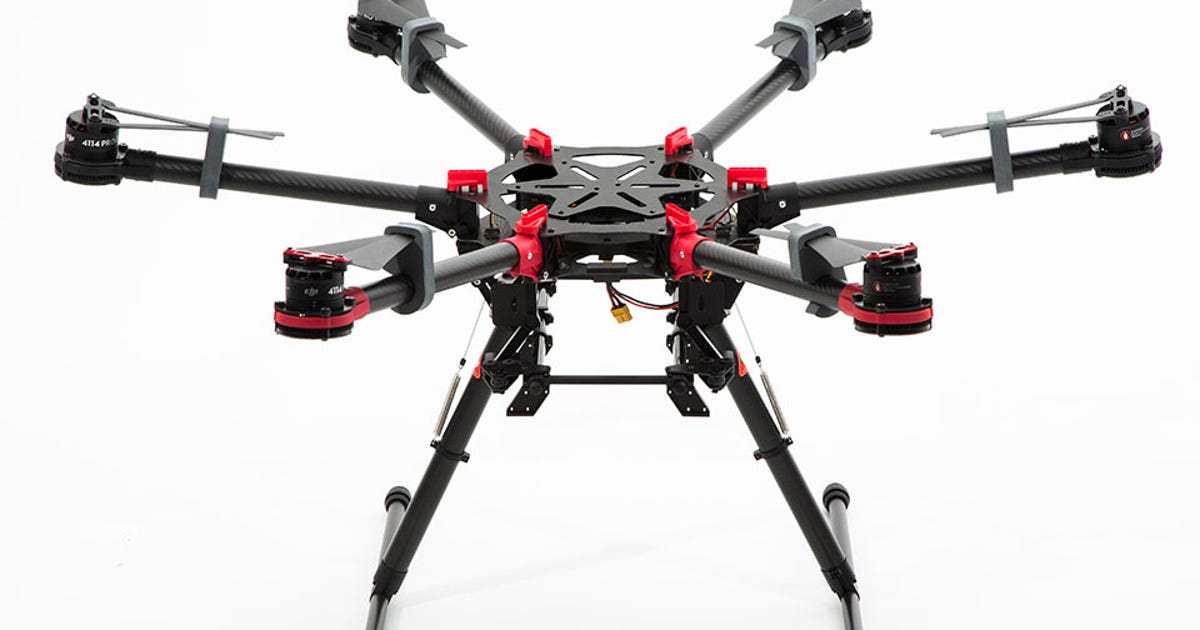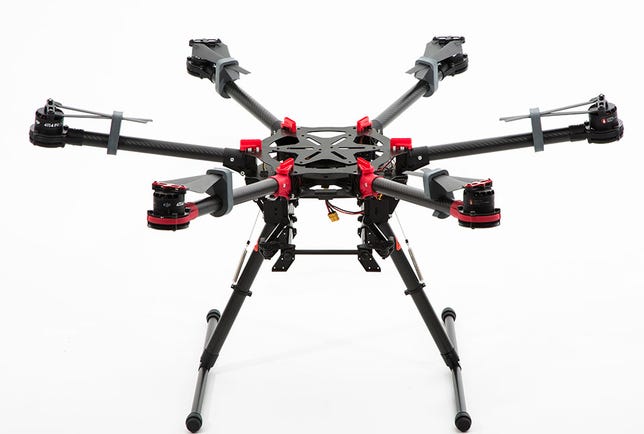Drone maker dji joins with olympus panasonic for business drone maker dji joins with olympus panasonic formatter drone maker dji joins with a blowtorch drone maker dji joins with examples drone maker dji joins in mysql drone maker stocks largest drone maker

Drone maker DJI joins with Olympus, Panasonic for better aerial photos

Attention photographers: mainstream drone products with high-end cameras appear to be readying for takeoff.
That's because DJI, maker of the popular Phantom series of camera-toting drones, has joined Olympus and Panasonic in the Micro Four Thirds interchangeable-lens alliance. The move could significantly expand China-based DJI's product line and tap into excitement around drone-based aerial photography.
DJI's Phantom drones come with their own cameras and can carry lightweight models like a GoPro, and the company also offers much larger, more expensive models like the S1000+ that can carry a much heavier SLR camera such as the Canon 5D Mark III. On Tuesday, though, Olympus announced that DJI joined the Micro Four Thirds alliance, which Olympus and Panasonic established to try to better compete with the dominant powers of Canon and Nikon. Joining the alliance signals that DJI could offer a drone with a Micro Four Thirds camera built in, then let photographers attach the lenses of their choosing.
By providing an eye in the sky, drones are a big deal for photographers and videographers looking for a fresh new angle. But unfortunately for professional landscape, real estate, wedding and events photographers, commercial drone use is generally prohibited in the United States. The Federal Aviation Administration hopes to release draft regulations that would open the market up more, but judging by exemptions the FAA has granted so far to the ban, it's likely to impose conservative requirements like a pilot's license for drone operators.
A built-in camera offers benefits including integration with DJI remote-control hardware and software, easier setup than with today's drone camera platforms, and, potentially, a drone-optimized light weight. The lens flexibility means photographers could attach anything from a fish-eye lens for an ultrawide view to a telephoto to zoom in on subjects -- as long as the lens doesn't weigh too much.
DJI declined to detail its plans for Micro Four Thirds-capable drones, but said it tries to strike the right balance between weight and flight time.
"Weight limit will depend on the platform, but in general our focus is to deliver the best possible optics and flight time," said DJI marketing specialist Chinmoy Lad. The company's Inspire 1 drone is a "breakthrough in this regard," he added, with a powerful camera, good optics, and 18 minutes of flight time.
Olympus said DJI plans to release Micro Four Thirds products, but the camera maker didn't offer details. Two other Chinese optical equipment companies, JCD Optical and Flovel, also joined the alliance.
"With the addition of exciting new products from these companies, the Micro Four Thirds lineup will become much more diverse, further increasing the potential of this advanced digital imaging system," Olympus said in a statement.
Micro Four Thirds cameras have a smaller sensor than Canon and Nikon SLRs, but they also generally offer more-compact bodies such as the Panasonic Lumix GF7 or the Olympus E-PL7 . Both Panasonic and Olympus also like very small, lightweight "pancake" lenses that would fit well on a drone.
(Via PetaPixel)
Updated at 3:20 a.m. PT with comment from DJI.
Source
Blog Archive
-
▼
2022
(240)
-
▼
November
(61)
- 5 Tasty Kitchen Deals Under $50 Today
- Best AT&T Phones Of 2022: Apple, Samsung And More ...
- Check Your Capri Sun: Thousands Of Cases Recalled ...
- Samsung Galaxy S10 Plus Review: Killer Cameras And...
- Google Has Big Plans For AR. Google Maps Could Be ...
- Concerned About Foldable Phones' Durability? Here'...
- Cuddling A Mechanical 'Breathing Cushion' Could He...
- Android 13 Has Arrived On Google Pixel Phones
- Apple's IPhone 13 Is Great, But These Missing Feat...
- Acer's Concept D Laptops Go 'Pro' With Quadro RTX
- Nothing Phone 1 Hands-On: There's A Lot To Like, I...
- Alphabet's Wing Begins Drone Deliveries In Dallas-...
- 2024 Hyundai Ioniq 6 EV Specs And More Details Ann...
- Cadillac Will Hand-Build The Celestiq EV In Michigan
- Child Tax Credit 2022: How Much Money Could You Ge...
- Save Up To 33% On Nearly All Of Amazfit's Great Fi...
- This Well-reviewed Air And Convection Oven Is $60 ...
- The Lenovo Flex 3 Chromebook Falls To Just $99 In ...
- Affordable Care Act: How To Sign Up And When You C...
- Twitter Trimming Office Space In San Francisco, Ma...
- Google Removed Over 3 Billion Ads, 5.6 Million Adv...
- Apple's Security Fix: Protect Your IPhone From Peg...
- IPhone 13 Still Loses To Android Phones In Several...
- Netflix Review: Still The Best Streaming Service
- Oppo Launches Smartphone Range In Australia
- Tesla Dropped From S&P 500 ESG Index Following Aut...
- GM Announces Plans For National EV Fast Charging N...
- FEMA Grants, SBA Loans: How To Get Government Help...
- Motorola Razr 5G Is Now Available With Discounts U...
- Back-to-school Laptop Deal: Ace Remote Learning Wi...
- The Best Roomba Alternatives To Keep Your Floors C...
- Windows 11: How To Set Google As Your Default Sear...
- Nissan Delays Japanese Ariya EV Launch Over Chip S...
- New Tesla Orders Will Require Subscription For Nav...
- Samsung's Under-$200 Galaxy Phones Target The Esse...
- Samsung's Display Chief To Kick Off CES 2022 With ...
- 2023 Ford Mustang Mach-E Prices Jump By Thousands ...
- How To Pick The Right Credit Card: Use These Tips ...
- Galaxy Z Flip Vs. Motorola Razr: How Samsung's Fol...
- 'The Gray Man' Will Become Netflix's Newest Cinema...
- Drone Maker DJI Joins With Olympus, Panasonic For ...
- Acer S5-391-9880 Review: Acer S5-391-9880
- Microsoft Store On Windows To Allow Third-party St...
- New 'Dexter' Malware Strikes Point-of-sale Systems
- Holiday Shopping Has Started Early Amid Fears Over...
- Huawei CFO Meng Wanzhou Enters Agreement With Just...
- Apple's IPod Touch Is Discontinued, Ending The Mus...
- Repair Shops Could Fix IPhone Face ID Issues Witho...
- Endangered Animals Are The Latest Things To Become...
- Digital Divide Fix Gets A Boost As Biden Signs $1....
- Pokemon Unite Halloween Event Now Live, Adds A New...
- 2023 GMC Canyon Teased Before Aug. 11 Reveal
- Nissan Ariya EV Orders Are Closed Indefinitely, Re...
- DJI Ronin-SC Stabilizer Is A Smooth Mover For Mirr...
- 9 Foods That Promote Relaxation To Help You Keep Calm
- Watch The First Footage From HBO Max's 'The Last O...
- Americans Have Lost Over $1 Billion To Crypto Scam...
- GoPro's Mobile Apps Cut Down On Video Editing Head...
- Best Car Loans And Lenders For August 2022
- Asus Zenbook UX301 Review: Asus Zenbook UX301 Is A...
- Kids Headed Back To School? Grab These COVID-19 Mu...
-
▼
November
(61)
Total Pageviews
Search This Blog
Popular Posts
-
Cartao de credito de tester, gerador de cartao de credito de portugal, santander cartao de credito desbloquear, cartao de credito de alumini...
-
Ukuran name tag yoyo stroller, ukuran name tag yo yo tricks, ukuran name tag yoyo games, ukuran name tag yoyo loach, ukuran name tag yoyo bu...
-
Ukuran f4 sama dengan a4 paper, ukuran f4 sama dengan a4 size, ukuran f4 sama dengan a4a, ukuran f4 sama dengan a4 apparel, ukuran f4 sama d...
